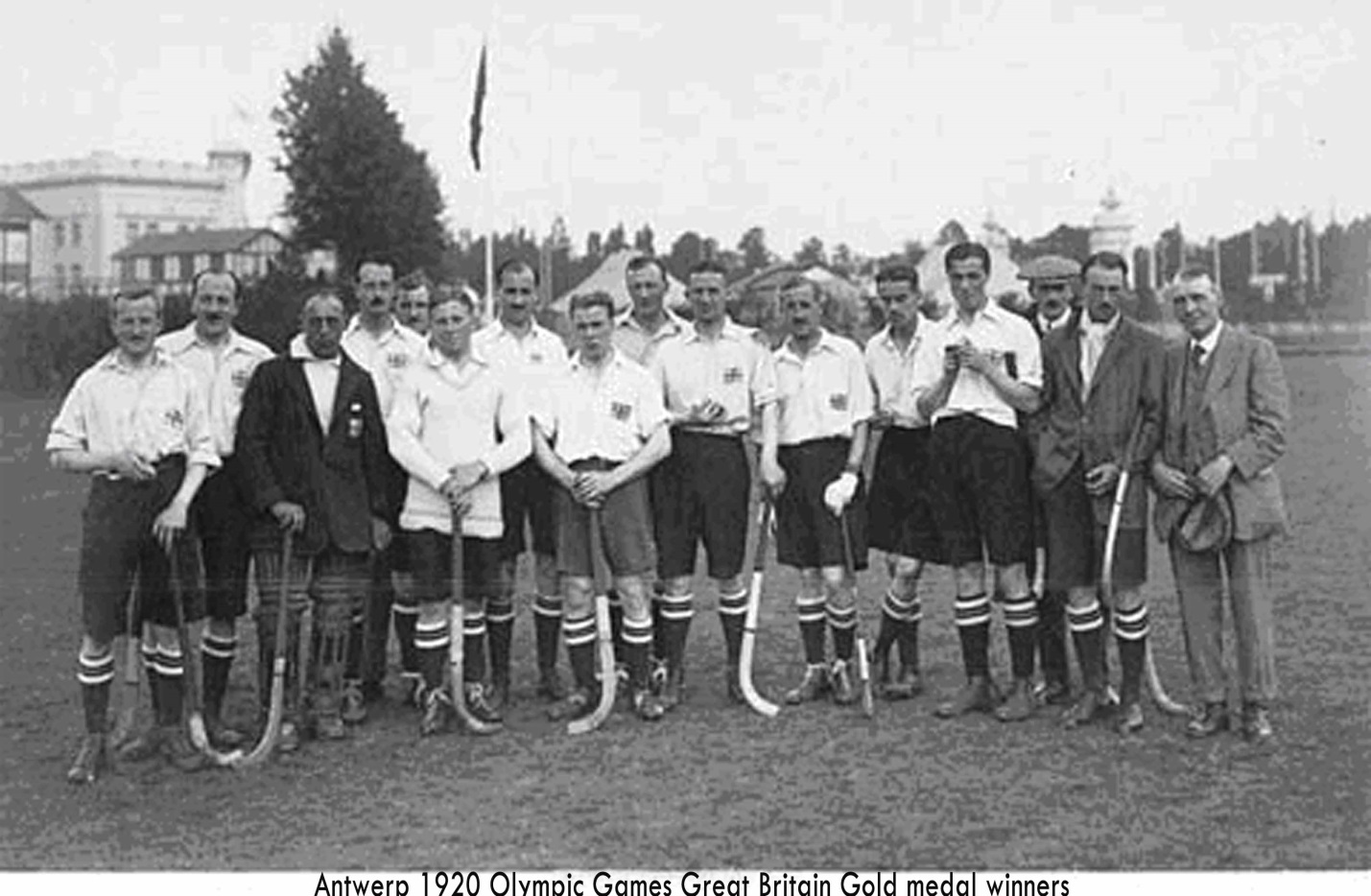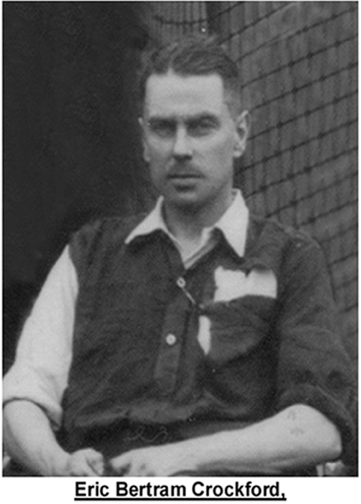- Chapter 12: Personalities in the Modern Game
- Intro
- CHAPTER 1: The Early Years 1891 to 1914
- CHAPTER 2: Standardization of the Rules. 1915 to 192
- CHAPTER 3: The "Golden " Years. 1920’s & 1930’s
- CHAPTER 4: THE EARLY CLUBS - PRE 1939
- CHAPTER 5: Personalities of the Early 20th Century.
- CHAPTER 6: THE POST WAR RECOVERY YEARS
- CHAPTER 7 : "THE PERENNIALS”
- CHAPTER 8: POST THE SECOND WORLD WAR YEARS
- CHAPTER 9: Rectory Park.
- Chapter 10: The Modern Game - The Last 50 Years
- CHAPTER 11: League Hockey
- Chapter 12: Personalities in the Modern Game
- Intro
- CHAPTER 1: The Early Years 1891 to 1914
- CHAPTER 2: Standardization of the Rules. 1915 to 192
- CHAPTER 3: The "Golden " Years. 1920’s & 1930’s
- CHAPTER 4: THE EARLY CLUBS - PRE 1939
- CHAPTER 5: Personalities of the Early 20th Century.
- CHAPTER 6: THE POST WAR RECOVERY YEARS
- CHAPTER 7 : "THE PERENNIALS”
- CHAPTER 8: POST THE SECOND WORLD WAR YEARS
- CHAPTER 9: Rectory Park.
- Chapter 10: The Modern Game - The Last 50 Years
- CHAPTER 11: League Hockey
4. CHAPTER 2: Standardization of the Rules. 1915 to 192
With the continuous improvements in the standard of the game, the club, by 1913, was generally recognized as being one of the strongest in the Midlands. Some of the players comprising the First Team at this time were E.B. (Tommy) Crockford (England) at center half, L.C. Crockford and R.M. Evans (both Warwickshire and Midlands) forwards, and B. Morris, W.J. Denston, W. Pollock, (all Warwickshire). Others were Jim Cond, Ludovic Evans, and A. Sylvanus Jones (in later years the headmaster of B V G S).
E.B. Crockford was captain for most of this period, with Leslie Crockford Hon. secretary, and Percy Grove, a cousin of the Crockford's, Hon. Treasurer, who was a very skillful full back losing his life at the battle of the Somme in 1916
Amongst a distinguished list of Vice Presidents, all of whom were outstanding personalities in the town were Dr. A.H. Evans JP. (later knighted Sir Alfred), A.L. Crockford JP., William Fowler, Allen Grove, H. Jerrard (Headmaster B V G S), Rev Canon C.W. Barnard, J. Lilly, R.S. Walters, F. A. Newdigate MP.
In addition to those previously mentioned fixtures were arranged with Rugby, Burton, Birmingham University, Edgbaston, and Erdington.
A few further words on transport. With motor vehicles at this time being almost non-existent, the means of getting to the grounds of opponents were largely restricted to railways and tram cars, which frequently involved long walks at each end. The thought arising is - would the players of the present, generation endure these conditions and show the same keenness our forefathers did for their sport.
On 4th August 1914 War broke out, and all eligible men were either voluntarily or by the 1916 Conscription Act merged into national service. All clubs were therefore deprived of their players and compelled to suspend activities for the duration, and until the cessation of hostilities made it possible for resumption.
THE EARLY RULES of HOCKEY
A set of Rules was actually drawn up by several clubs in London in January 1876 following the establishment of the first, but short lived, Hockey Association (of England) the year before. (The second, and final, Hockey Association was formed in 1886.) Prior to that date the captains had agreed the Rules under which each game was played, including :
- the number of players per team which varied from eight to eleven.
- Offside was specified as requiring three opponents to be nearer their own goal-line and applies throughout the pitch except when the ball is hit from the goal-line; [*]if the ball goes out of play over the side-line (described in these rules as being “in touch”) play was restarted by rolling the ball back into the field at right angles to the line;
- Players were not permitted to raise their stick above their shoulder;
- The “D” was not always marked on the pitch but the rules did say that “no goals shall be allowed if the ball be hit from a distance of more than 15 yards from the nearest goalpost”;
- If a rule was infringed “the ball should be brought back to where it occurred and a bully shall take place”;
- The goal posts would be 7 feet tall with a tape stretched across the top of the posts.
- Sticks were curved wooden ones, approved by the Association.
- The ball was an ordinary sized cricket ball.
Some typical hockey actions were referred to in the early rules but not defined; for example:
- a bully starts the game but there is no specification of how a bully is conducted;
- Another example was that the flat playing side of the stick is not defined but the rules do say that “the ball shall be played from right to left”.
By the time the Sutton Coldfield Hockey Club was formed in 1891, The Hockey Association in 1886 had introduced a number of rules in an attempt to standard the game as follows:
- The goal posts would be 7 feet apart with a cross bar.
- Sticks were wooden with a leather handle, but the stick must pass through a two-inch measurement ring; sticks could have a four-inch external diameter India rubber ring above the splice to prevent finger injuries.
- The ball was an ordinary sized leather cricket ball painted white.
- Offside still required three opponents to be nearer their own goal line applicable from the half way line
- All non-involved players had to be 5 yards from the ball at free hits, rolls-in and bullies; rolls-in by hand were used to put the ball into play after it had gone over the side-line;
- Teams comprised eleven players – five forwards, three half-backs, two full-backs and one goalkeeper; no substitutes were allowed even for injury;
- The game was controlled either by two umpires or one umpire (referee) assisted by two linesmen;
- The ball was played with one side of the stick (the left-hand side) only; the ball could not be played above the shoulder or with the rounded side (back) of the stick;
- It was not permitted to kick, trip, shove, or obstruct an opponent;
- Hands and feet could be used to stop the ball but then had to be moved out of the way;
- Feet and legs could not to be used behind the ball to resist opponents;
- Goalkeepers could kick the ball but only within their own circles;
- Hooking of sticks was allowed but only within striking distance of the ball;
- A bully was taken in the circle for an offence by a defender; free hits were given for other fouls.
- There was no mention of goalkeeper’s equipment;
A few new rules were added every few years:
1894: Reverse stick play was permitted as were shots at goal without first stopping the ball.
1900: The 23rd April the International Rules Board, later the Hockey Rules Board was formed. Advantage was recognised; not every offence was to be penalised immediately.
1904: Intentional undercutting and raising the ball from a hit was to be penalised.
The scoop stroke was permitted.
1905: Each umpire was to take half of the pitch for the whole game without changing ends and to take decisions on rolls-in for the whole of their side-line, but not for corners.
Umpires were also empowered to warn and/or suspend players from the game.
A weight limit of 28 ounces was laid down for sticks.
1907: Umpires were allowed to apply the Rules without waiting for an appeal. Prior to this time appeals had to be made by players before an umpire could give a decision.
1908: The penalty corner was introduced for offences by defenders in the circle.
At a penalty corner, the Rules required the ball to be stopped before a shot at goal but this was not umpired rigorously. All defenders were behind the goal-line with attacking players outside the circle. The bully was replaced by a penalty bully for deliberately stopping a certain goal.
1909: The width of the pitch reverted to 55 to 60 yards.
1910: Goalposts were specified as 2 inches deep and not more than 3 inches wide.

 Tom Crockford
Tom CrockfordEric Bertram Crockford known as Tom played for England fourteen times between 1911 and 1922 and represented Great Britain and Ireland in the 1920 Antwerp, Olympic Games winning a Gold Medal playing hockey.
This was the last Olympic Games when Great Britain and Ireland were one team. He would undoubtedly have received many more caps but for the intervention of the war period throughout which he served his country with distinction.
Tom was an outstanding sportsman playing cricket for the Warwickshire County Cricket Club and for Sutton Coldfield Cricket Club. He was also the Midland Billiard and Snooker champion.
The Great War robed Tom of many more appearances for both Great Britain and England.

